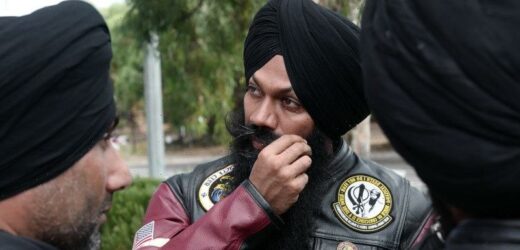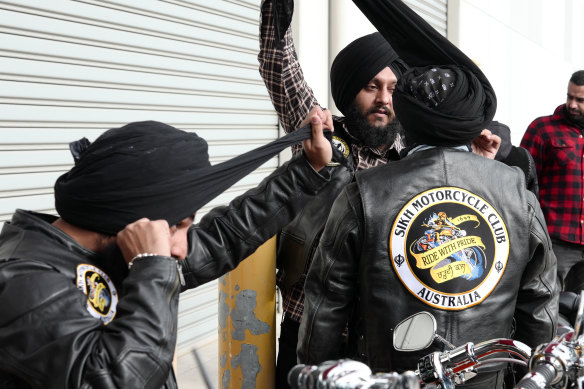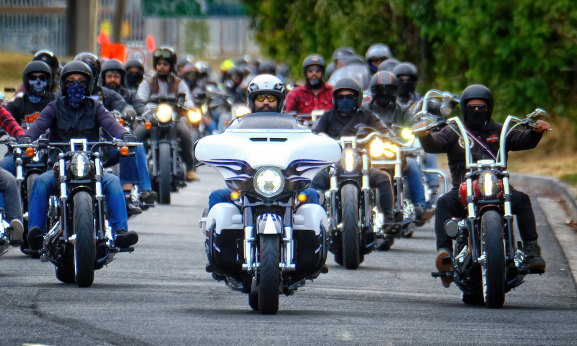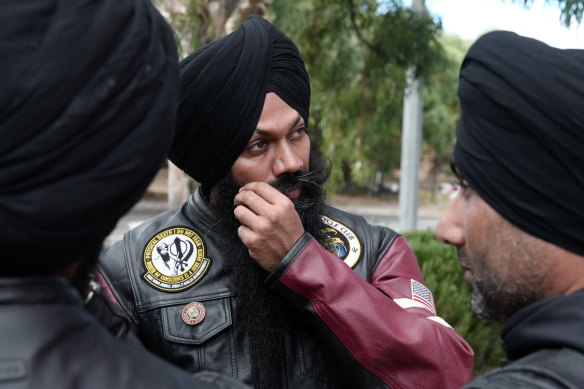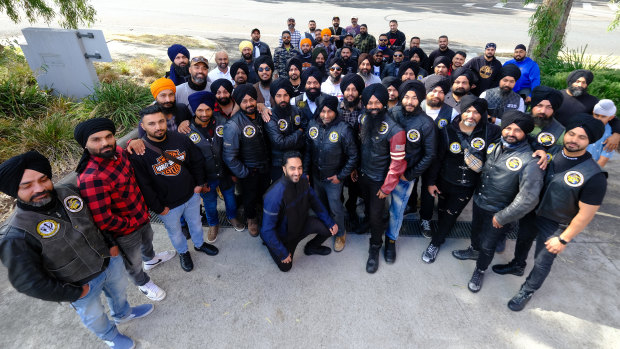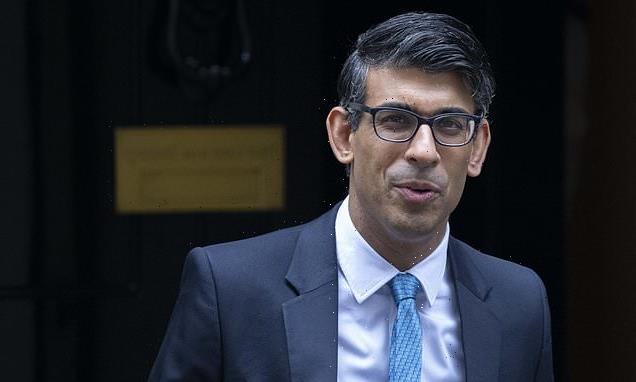Nine years ago, Parampreet Singh Rajput realised he was living life as though he were a machine. He worked more than 16 hours a day, seven days a week. As a young migrant, he sought to do well.
“I realised I was losing the real taste of life,” said the chartered accountant, who runs his own business. “It was ‘work, work, work’ and nothing else.”
Club members untie their turbans before donning the helmets they must wear to ride.Credit:Luis Enrique Ascui
The 40-year-old, from Lyndhurst in Melbourne’s south-east, started spending more time with his wife and two daughters. And he sought a hobby.
He remembered how, in Amritsar, his home city in northern India, he used to love riding a motorcycle up into the hills with friends.
He bought a second-hand motorcycle and, in October 2014, rode from Geelong to Lorne along the Great Ocean Road with two friends. They had a great time.
So began the Sikh Motorcycle Club Australia – made up mostly of Sikh men from the Punjab region of India – which now has more than 120 members.
On the road again: Parampreet Singh Rajput (centre) leads the Sikh Motorcycle Club Australia on Sunday.Credit:Luis Enrique Ascui
They wear black jackets and many ride sleek Harley-Davidson machines. Club rules include no alcohol or drugs, no overtaking each other and no speeding.
Rajput once counselled a young man who rode too fast on his sports bike, warning him “either you leave the club or be more disciplined”. The man no longer speeds and is an accepted club member.
According to the Australian Bureau of Statistics, the number of Sikhs in Australia has soared, from 12,000 in 1996 to 210,400 in 2021.
The motorcycle club has thrived and destinations for their monthly Sunday rides have included Hanging Rock, Ballarat and Healesville. There have been longer trips to Canberra and Phillip Island. Sometimes they stop to pray at temples.
A member of the Sikh Motorcycle Club Australia.Credit:Luis Enrique Ascui
“I feel like a bird, I have wings. I’m flying,” Rajput says of the freedom of the road.
The club logo includes the year 1699, the year the tradition of Khalsa (“to be pure”) was initiated by the 10th guru of Sikhism, Guru Gobind Singh.
The logo also says “ride with pride” in English and, in Punjabi, “chardi kala”, meaning a positive attitude.
Rajput says club members see themselves as cultural ambassadors, answering questions from the public such as: “Do you change your turban colour every day?”
Members meet in Port Melbourne on Sunday before their first official ride of the year.Credit:Luis Enrique Australia
The club logo depicts a Sikh wearing a turban, but the group’s members have been unsuccessful in lobbying for a legal exemption from wearing helmets and cannot wear turbans while they ride.
When they resume riding after a rest, they have to untie their turbans and put on helmets.
Rajput says he feels guilty – “like I’ve done something wrong” – when he doesn’t wear his turban.
The turban represents Sikhs’ identity, faith, the love of the guru and resolve to do good deeds.
Baljit Singh, who joined the club in 2017, reckons they would have more than 1000 members if they didn’t have to use helmets and could wear their turbans. He said motorcycle riders in places such as India, Britain and some Canadian provinces don’t have to wear a helmet if they are turban-wearing Sikhs.
Singh has noticed that in Australia, motorbike riding is more for pleasure than in his homeland. “In India, we ride to commute everywhere. When I was a teenager there, I rode a bike because it’s easier than driving a car,” he said.
The Morning Edition newsletter is our guide to the day’s most important and interesting stories, analysis and insights. Sign up here.
Most Viewed in National
From our partners
Source: Read Full Article
